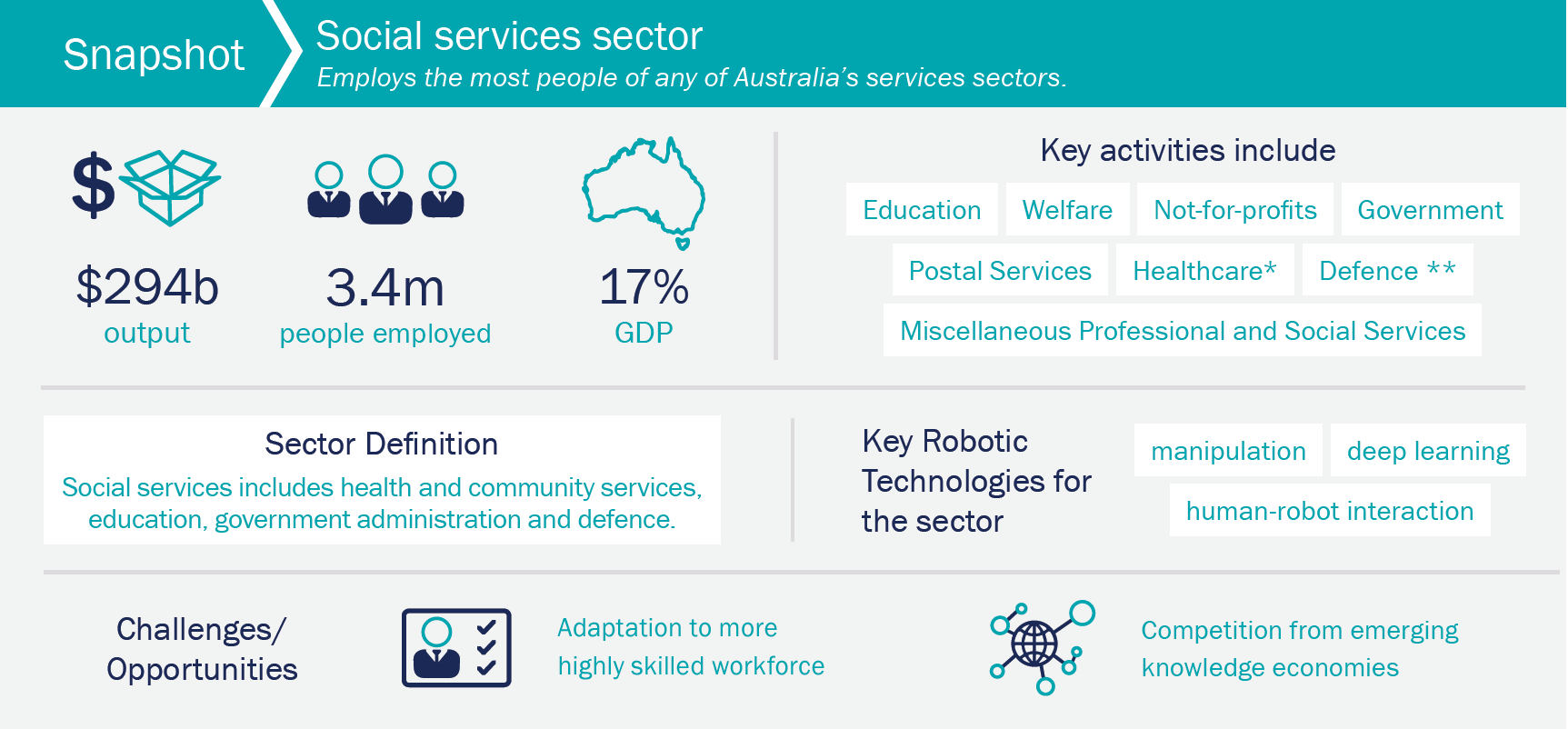
Main findings for robotics in social services
Social services are non-market services that are free or heavily subsidised. The sector is an important employer of highly educated people, and those located in regional areas, including teachers, scientists, doctors, nurses, defence personnel, police and other public servants. As with many sectors, social services have an ageing workforce, with 23 per cent of workers in education and training aged over 55 years. The most sophisticated application of robotics in social services is in defence and the emergency services. Police use robotics for surveillance and intelligence-gathering to protect people from dangerous situations. Robotics is not implemented at scale in the sector, although robotic technologies can act as a force multiplier in under-resourced areas, where they might significantly free up worker time, for example, in teaching. Robots are also being trialled for behavioural and therapeutic interventions, traffic control, and enforcement. The full-range of possible applications of robotics in social services has hardly been explored, suggesting that there could be many opportunities in the sector.

